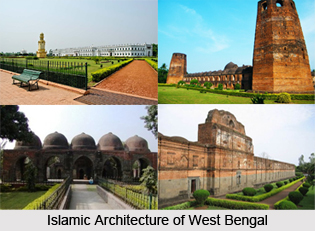 Monuments in Eastern India are the singular silent spectator of the onslaught with regard to history, culture and tradition of the region. Eastern India monuments and forts are the manifestation of highly sole lifestyle, approach and mode of the residents of that place. East India possesses a large portion of entire significant catacombs and tombs in India. Various forts, archaeological sites, ancient monuments and remains of national importance are placed in a systematic manner in various geographical settings of the region.
Monuments in Eastern India are the singular silent spectator of the onslaught with regard to history, culture and tradition of the region. Eastern India monuments and forts are the manifestation of highly sole lifestyle, approach and mode of the residents of that place. East India possesses a large portion of entire significant catacombs and tombs in India. Various forts, archaeological sites, ancient monuments and remains of national importance are placed in a systematic manner in various geographical settings of the region.
East India or Eastern India includes the states of West Bengal, Bihar, Jharkhand, and Odisha. Historically speaking, the region`s life has circled around its two great river systems, the Ganges and the Brahmaputra which flows in the Bengal plains to form a massive delta of fertile alluvial soil and marshland which is regarded as one of the world`s most fertile regions. This unparalleled location along with the dense forests, shifting river channels, heavy rainfall and recurrent floods provided shape to the destiny of population and had a fundamental influence on the architecture and art of the country. The architecture of the monuments in the states of Bihar, Odisha, Jharkhand and West Bengal are influenced by several invasions.
Historical monuments in Bengal
The arrival of Muslims in Bengal brought a highly developed tradition and architectural vocabulary. The dome, arch, minaret and other distinctive elements were already established. The earliest Islamic monuments in India, constructed before 1410, such as the Adina Mosque at Pandua or the Victory Tower at Chota Pandua, seem to have a clearly alien character, foreign impositions on a native culture. On the other hand, many of the later monuments lacking minarets and with low domes, low facades and curved chala roofs, modeled on the thatched bamboo bungalow, exhibit an interpenetration of architectural forms and styles more suited to the peasant society of Bengal.
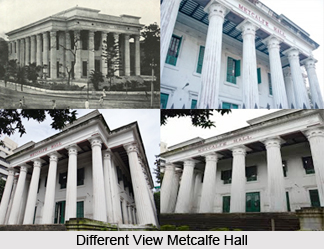 Heavy rainfall in West Bengal dictated the form of the early mosques in the region. They do not have open courts, ablution tank, liwans and attached minar which are common elsewhere. Usually, the mosques in Bengal are compact buildings with a simple prayer chamber and grassy courtyard with a large tank to one side. The later Mughal mosques are fundamentally different, with either one or three domes.
Heavy rainfall in West Bengal dictated the form of the early mosques in the region. They do not have open courts, ablution tank, liwans and attached minar which are common elsewhere. Usually, the mosques in Bengal are compact buildings with a simple prayer chamber and grassy courtyard with a large tank to one side. The later Mughal mosques are fundamentally different, with either one or three domes.
This fusion of the local vernacular traditions and the Islamic architecture contributed to the evolution of a distinctive indigenous style. The local do-chala and char-chala roofs, made of bamboo or thatch, were taken by the Muslim masons and translated into effective stone or brick buildings. The readily available fine alluvial soil, together with a long historical tradition of terracotta decoration, produced an art form which occupies a unique position in the history of culture of Islam. Some of the 19th century mosques of Kolkata, show a strong classical European character derived from colonial architecture.
With the conquest of Bengal, European architecture made a significant impact on local styles in Bengal. At Murshidabad, Hazarduari, the palace of the Nawabs of Bengal was designed on classical lines by a British army engineer, and had an adjacent Imambara built ten years later. Going forward huge forts, like the Fort William, were superseded by spacious cantonments on the outskirts of the city, at Barrackpore and Dum Dum.
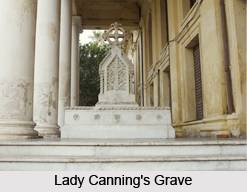 The Church of Our Lady of the Rosary in Bandel is one of the notable monuments of West Bengal. A list of other monuments of West Bengal includes Government House, The Temple of Fame by Captain George Rodney Blanc, Lady Canning`s Grave, Semaphore Tower, Victoria Memorial, Belur Math, Marble Palace, Jorasanko Thakur Bari, Shaheed Minar, St. Paul"s Cathedral, Writer"s Building, Raj Bhavan, Howrah railway station, Howrah Bridge, Metcalfe Hall, Town Hall, Rasmancha at Bishnupur, Cooch behar palace, Lukochuri Gateway at Malda, Dakshineshwar Kali Temple, Hooghly Imambara, Armenian Church of Holy Nazareth, and Kurumbera Fort, to name a few.
The Church of Our Lady of the Rosary in Bandel is one of the notable monuments of West Bengal. A list of other monuments of West Bengal includes Government House, The Temple of Fame by Captain George Rodney Blanc, Lady Canning`s Grave, Semaphore Tower, Victoria Memorial, Belur Math, Marble Palace, Jorasanko Thakur Bari, Shaheed Minar, St. Paul"s Cathedral, Writer"s Building, Raj Bhavan, Howrah railway station, Howrah Bridge, Metcalfe Hall, Town Hall, Rasmancha at Bishnupur, Cooch behar palace, Lukochuri Gateway at Malda, Dakshineshwar Kali Temple, Hooghly Imambara, Armenian Church of Holy Nazareth, and Kurumbera Fort, to name a few.
Historical monuments in Odisha
The East India monuments also include several historical monuments in the state of Odisha. Some of the cities of the state like Cuttack, Bhubaneshwar, Puri, Balasore, etc display a rich political and social history through array monuments that are architectural marvel. For instance, the Fort Barabati which is largely ruined is build with the exception of the fine arched Lion gateway.
The Kadam-i-Rasui is a complex of three mosques, each crowned by a fine dome. There is a Naubhat Khana or music gallery and a shrine with a huge dome, the largest in the state of Odisha. The footprints of Prophet Muhammad are engraved on a circular stone inside the building, which is venerated by both Muslims and Hindus.
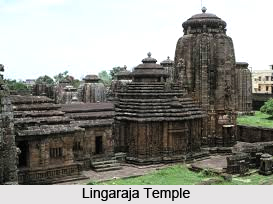 Historical monuments in Bihar
The colossal Lord Jagannath temple and the Konark Temple are reminiscent of the royal past of the region. Some of the other monuments of Odisha includes Lingaraja Temple, rock cut caves of Dhauli, Udaygiri, Khandagiri, Ratnagiri, Mukhteswara temple, Barabati Fort, Lalitgiri, Chausath Yogini Temple, Brahmeshwara Temple, Ananta Vasudeva Temple, Rajarani Temple, etc.
Historical monuments in Bihar
The colossal Lord Jagannath temple and the Konark Temple are reminiscent of the royal past of the region. Some of the other monuments of Odisha includes Lingaraja Temple, rock cut caves of Dhauli, Udaygiri, Khandagiri, Ratnagiri, Mukhteswara temple, Barabati Fort, Lalitgiri, Chausath Yogini Temple, Brahmeshwara Temple, Ananta Vasudeva Temple, Rajarani Temple, etc.
Bihar, one of the states of India, has been divided for form another state called Jharkhand. It is a historically important place due to the presence of several ancient monuments. Some of the notable monuments include Amandbagh Palace at Darbhanga, Hill fort of Shergarh, Sher Shah Suri"s palace and Tomb of Sher Shah Suri.
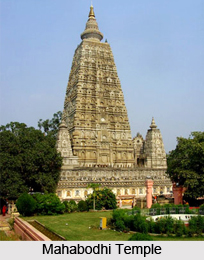 Some of the other monuments in Bihar and Jharkhand include Golghar, Nalanda Mahavihara, Barabar caves, Agam Kuan, Vishwa Shanti Stupa, Ajatshatru Fort, Kumhrar, Chhoti Dargah, Padri Ki Haveli, Pathar ki Masjid, Rohtasgarh fort, Tomb of Hasan Shah Suri, Tomb of Shah Makhadum, Palace of Asoka, , Lomas Rishi Cave, Sujatagarh, Laur pillar, Patalpuri Cave, Sarnath, Mahabodhi Temple of Bodh Gaya, and Manjhi Saran to name a few.
Some of the other monuments in Bihar and Jharkhand include Golghar, Nalanda Mahavihara, Barabar caves, Agam Kuan, Vishwa Shanti Stupa, Ajatshatru Fort, Kumhrar, Chhoti Dargah, Padri Ki Haveli, Pathar ki Masjid, Rohtasgarh fort, Tomb of Hasan Shah Suri, Tomb of Shah Makhadum, Palace of Asoka, , Lomas Rishi Cave, Sujatagarh, Laur pillar, Patalpuri Cave, Sarnath, Mahabodhi Temple of Bodh Gaya, and Manjhi Saran to name a few.
Historical monuments in Jharkhand
The region of Jharkhand was once the part of Magadha Empire and was a tributary of Kalinga that is ancient Odisha. Jharkhand also known as the land of forests has a rich cultural and political history that is evident from the monuments of the region that exemplify architectural marvel.
Some of the historically significant monuments of Jharkhand include Kauleshwari Devi Temple, Royal Mosque of Chatra, Jagannath Temple at Ranchi, Bhuvaneshwari Temple, Deori Temple, Maluti Temple, Palamu Fort, Naulakha Mandir, Martello Tower, Betla Fort, etc.



















